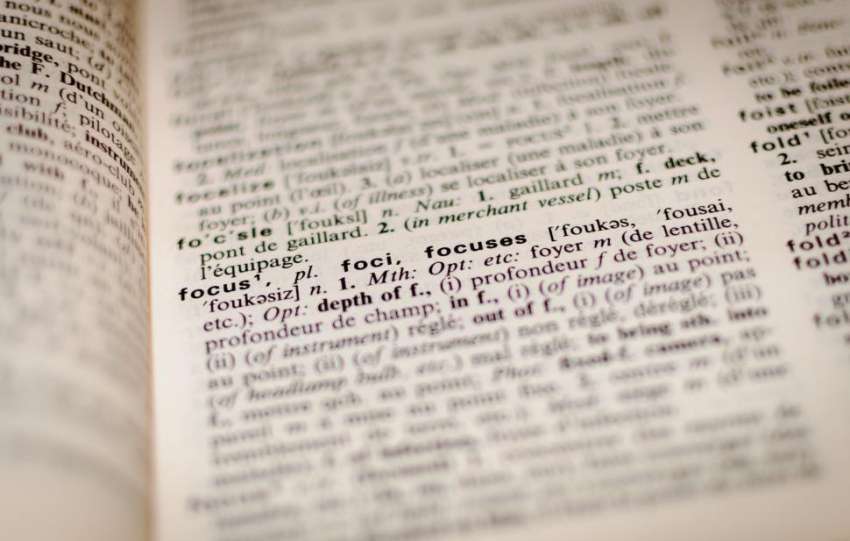Share This Article
Gemma Hudson discusses the practicalities of living with a disability and the need for increased accessibility.
Author’s Note: Throughout this article, I have elected to use identity first language (disabled person) rather than person first language (person with a disability). I have done this because my disability does encompass many aspects of my life, and I am proud to identify with that. Just as I am a woman (rather than a person who is a woman) or a university student (rather than a person who goes to university), I am also disabled. Within the disability space this can be a contentious topic, different people and advocacy groups have different preferences, and it is best to ask individuals or use a mix of both if you are unsure, and adjust to any corrections someone makes. More important than the language used in this article is its spirit, which is one of making sure that regardless of what words you use to describe us, you treat disabled people and their accessibility measures with kindness and respect.
Accessibility was something I never considered in great detail. The world was something I always knew I could fully experience, and I never wondered, or worried, what it would be like if I could not. That all changed in July 2020 when I was diagnosed with a chronic illness. That’s when I learnt that accessibility is a privilege. A privilege that I used to have. A privilege I no longer fully enjoy.
It is a privilege to know that every day, when you wake up you will encounter a world that is made for your body, that does not make you sick. It is a privilege to know that the walk to work won’t make you so exhausted that you will fall asleep as soon as you arrive home. It is a privilege to know that every building you walk into is one you will physically be able to navigate. It is a privilege to have faith that your body will bounce back from whatever you put it through.
My chronic illness is called fibromyalgia. It is characterised by chronic pain and fatigue, poor sleep, and poor memory and concentration. In January, I also received a diagnosis of psoriatic arthritis, which is an immune disorder that damages the joints.
Having a disability has created more restrictive experiences for me. I have far less energy than I used to. I experience pain more often. I can no longer play my favourite sport. I received these diagnoses amongst the backdrop of a global pandemic. Combined with my immune issues, that pandemic is now potentially life-threatening for me.
I have a heightened awareness of when events or organisations are not accommodating to me. The privilege of accessibility has been removed from my life, and I fully comprehend the frustration which stems from not being able to have equal access to the world.
I’ve seen and understood first-hand the issues that come from a lack of accessibility. Now I have three things that you, as the planner of an event, as the head of an organisation, or as someone who just wants more awareness of what experiencing an inaccessible world is like, can read and learn to help accommodate disabled people.
1. Consider the diversity of disability
It is important to acknowledge that no two disabled people are totally alike, and not every disability is something you can immediately see. There are a vast number of different disabilities, with wide ranging requirements. Even two people with the same disability will likely have divergent accessibility needs and desires, based on how new the diagnosis is, how well their treatment is working, and what specific tools and measures help them manage their disability the best.
Disability is an incredibly individualised thing, it does not look, act, or feel a certain way, and one of the unacknowledged challenges for those making accessibility requirements is that by attempting to streamline or standardise the creation of accessibility, the capacity to make it truly effective can be lost. If an event planner has a stock-standard checklist of requirements, such as wheelchair ramps or elevator access, that is valuable, as it does improve accessibility for many people at an event. However, the issue comes when this standard checklist prevents innovation. Essentially, when doing the bare minimum for those with disabilities stops the creation of individualised accessibility requirements which are the most meaningful and effective.
2. Actually consult disabled people
Given the wide variety of accessibility requirements just mentioned, we really should ask disabled people what they want. They will be able to provide any specialised requirements they have, and most importantly, their preferences. If we take for example, a social sports day as an event that could provide challenges for disabled people’s participation, we can identify a range of preferences that would change the way accessibility requirements need to be implemented.
Some disabled people would prefer to try to take on the same activity that able-bodied people are doing, whilst monitoring themselves and their wellbeing. For me, this would look like subbing in and out of play frequently so I get an opportunity to rest, and my teammates being accepting of the fact that I would not be able to play a full match. Others might prefer a modified version of the event, perhaps with slightly different rules or accommodations so they can still participate along with others, but in a way that makes the process easier for them. This might mean different rules surrounding tackling in contact sports. Some may not want to play but would still enjoy being part of the proceedings, by watching, cheering for their friends, and being involved in an organisational capacity. Three people with the exact same illness may each pick one of these different options based on their preferences, and those desires should be accommodated, rather than assuming that they would all prefer the same option.
A poor example is the 2020 US Open, when organisers made the unilateral decision to cut wheelchair tennis, under the guise of protecting disabled athletes without actually consulting disabled athletes. Dylan Alcott (Australian Paralympian and tennis star) spoke out, mentioning that he would personally feel comfortable going to play, yet the US Open effectively made the choice of whether or not he could for him. The backlash created by his comments forced the US Open to allow disabled athletes to play, demonstrating that organisers would have been wise to consult disabled athletes before making decisions for them.
3. Make accessible alternatives equally valuable
The third, absolutely key part of creating an event that is truly accessible is not to just offer disabled people a tokenistic alternative. If an alternative has less effort put into it, is not marketed or offered as a genuinely enjoyable option for all, and simply put, is only something a person would be willing to do if they absolutely could not participate in the ‘main’ event, then that is not an accessibility measure, it’s an exclusionary one. This is because as an organiser, what you are doing isn’t trying to include disabled people, it’s placing them to the side so you don’t have to confront the requirements of their disability. If an alternative is something that only disabled people who genuinely cannot participate in another part of the event would do, that does not involve them in your community, it isolates them from it under the guise of compassion.
For me like many others, the medication I take to manage my disability means I am unable to drink alcohol. At many social events, while alcohol is visibly available, non alcoholic alternatives are something you have to specifically ask for. I find this creates a level of anxiety where though I know non alcoholic options exist, I do not have certainty that what I wish to drink is available. If we consider non-alcoholic drinks an accessible alternative, for it to be effective there need to be a variety of options available (to avoid tokenistically ‘accommodating’ for those who can’t drink), and these options have to be visible to give people the certainty that they are there.
Accessibility, when done correctly, is incredibly meaningful and valuable to disabled people. It makes you feel valued and welcomed. It makes you feel wanted in a world that is often exclusionary. It allows you to have the same experiences as your abled peers, something you may rarely experience. It is not something that can be an afterthought. True, genuine accessibility, simply put, is life changing.
Image: Pexels




